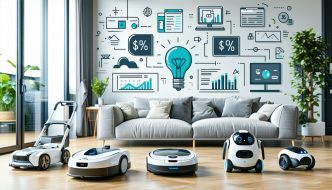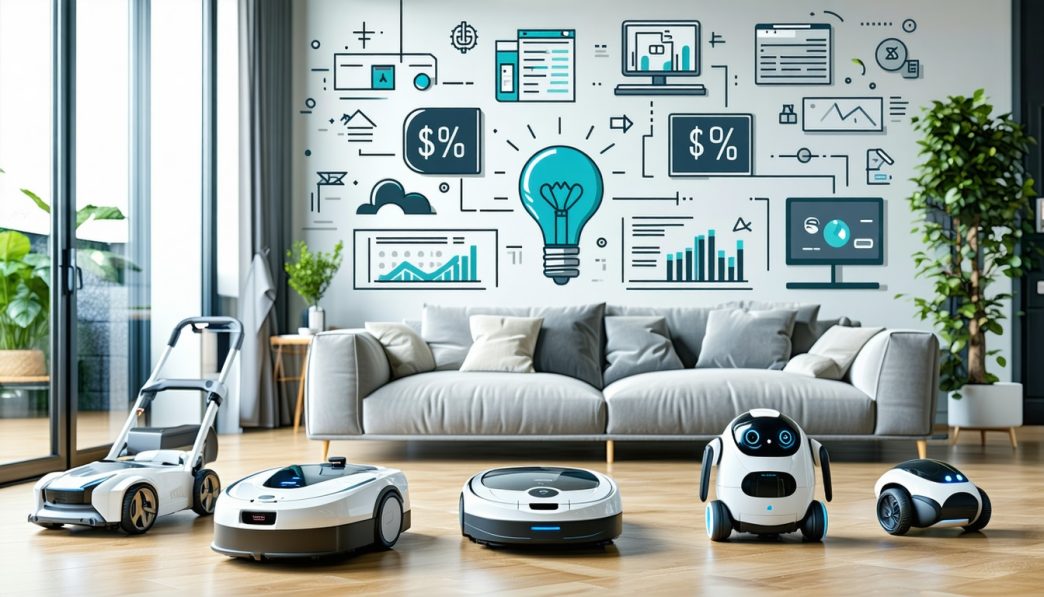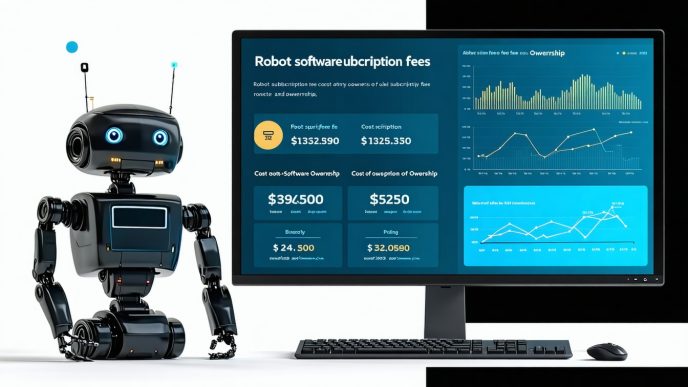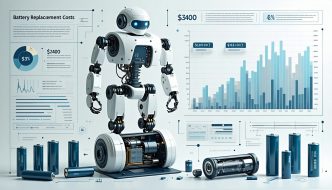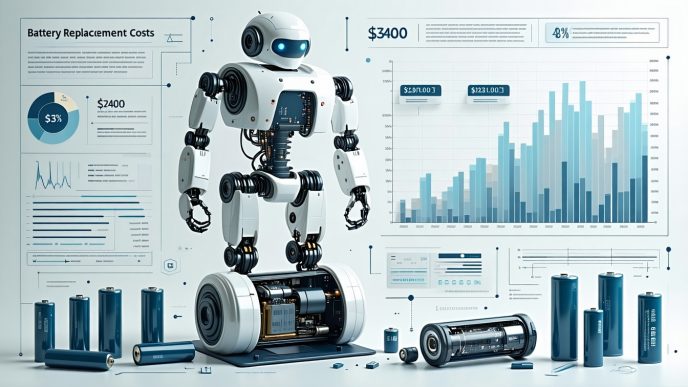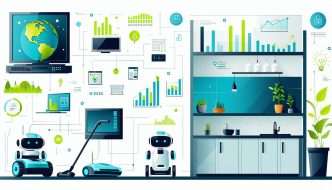Evaluating the True Cost of Home Robots
Understanding the Concept of Total Cost of Ownership
When considering a home robot, it is essential to look beyond the initial purchase price and examine the concept of Total Cost of Ownership (TCO). TCO encompasses not only the upfront cost but also all expenses associated with owning and operating the robot over its entire lifespan. This includes ongoing costs such as maintenance, repairs, energy consumption, and any necessary upgrades.
By analyzing the TCO, first-time buyers, value-conscious shoppers, and tech enthusiasts can make more informed decisions. Understanding the full financial implication helps to evaluate whether a robotic solution is worth the investment compared to traditional appliances and services.
Factors to Consider Beyond the Initial Price
To accurately calculate the cost of ownership for home robots, several factors must be taken into account. Each factor contributes to the overall financial picture, including:
-
Maintenance and Repairs: Regular upkeep and potential repairs can significantly impact costs. Estimating these expenses aids in budgeting effectively. For more details, refer to our article on robot maintenance costs.
-
Energy Consumption: Home robots consume energy, and this can add to the monthly electric bill. Evaluating the energy efficiency of the robot and estimating energy costs over time are crucial steps. More information can be found in our article on energy costs of running home robots.
-
Software and Subscription Fees: Some robots may require software updates or subscriptions for added functionality, contributing additional ongoing costs. Understanding these fees is important for fully assessing the TCO. Check our article on robot software subscription fees for insights.
-
Upgrades and Accessories: Enhancing the robot’s capability through upgrades or necessary accessories can also incur costs. Planning for these future expenses ensures a comprehensive understanding of ownership costs.
-
Battery Replacement Costs: Over time, batteries will likely need to be replaced, which adds to the overall expenses. Learn more about this in our article on battery replacement costs for robots.
-
Hidden Costs: Be aware of any hidden costs involved in robot ownership. Familiarizing oneself with these can prevent unexpected financial strains later on. Explore this topic further in our article on hidden costs in robot ownership.
-
Depreciation: Understanding how robots depreciate over time can inform the decision-making process, especially if considering resale value. Delve into this subject in our article on depreciation of robots over time.
Below is a summarized table of potential cost factors to consider when evaluating home robots:
| Cost Factor | Description |
|---|---|
| Initial Purchase Price | Upfront cost of acquiring the robot |
| Maintenance Costs | Costs associated with regular upkeep |
| Energy Costs | Monthly utility expenses related to operation |
| Software Subscription Fees | Ongoing fees for software updates and features |
| Battery Replacement Costs | Costs incurred for replacing worn-out batteries |
| Upgrades and Accessories | Additional expenses for enhancements |
| Repair and Part Replacement Expenses | Costs for fixing issues or replacing parts |
| Extended Warranties | Optional costs for added protection and coverage |
By evaluating these factors comprehensively, individuals can effectively assess the long-term financial commitment involved with home robots. This approach provides clarity for making an informed investment, aligned with their specific needs and budget constraints. For those looking for ways to reduce costs associated with ownership, our article on saving money on robot ownership offers useful tips.
Initial Purchase Price vs. Long-Term Costs
Understanding the financial implications of buying a home robot involves analyzing both the initial purchase price and the long-term expenses associated with ownership. This section focuses on breaking down the initial investment and estimating ongoing costs over time.
Breaking Down the Initial Investment
The initial purchase price is often the first figure a potential buyer considers. However, this cost can vary significantly depending on the robot’s features, capabilities, and brand. Buyers should not only look at the price tag but also understand what is included in their purchase.
| Component | Typical Cost Range |
|---|---|
| Robot Unit | $200 – $1,500 |
| Software Subscription Fees | $0 – $120 annually* |
| Extended Warranties | $100 – $300 |
| Initial Setup/Installation | $50 – $200 |
*Note: Optional, based on advanced features.
Buyers should consider potential additional costs and weigh them against the initial price. For instance, advanced robots may require ongoing software updates, which may lead to recurring charges, elaborated in our article on robot software subscription fees.
Calculating Long-Term Expenses
Once the initial investment is made, long-term expenses accumulate over the life of the robot. Regular maintenance, energy consumption, and potential upgrades should all be factored into the cost of ownership for home robots.
| Expense Type | Estimated Annual Cost |
|---|---|
| Maintenance (Cleaning, Parts Work) | $100 – $300 |
| Energy Costs (Electricity Usage) | $20 – $60 |
| Battery Replacement Costs | $50 – $150 every 2–3 years |
| Repair and Part Replacement Expenses | $100 – $400 |
| Hidden Costs (Accessories, Software) | $50 – $200 |
Buyers should also consider the value of depreciation over time, which can affect the robot’s resale value. More details on this can be found in our article on depreciation of robots over time.
Being aware of the total cost of ownership helps in making an informed decision. For tips on managing expenses, explore our article on saving money on robot ownership. By evaluating both initial and long-term costs, buyers can better assess whether a home robot fits within their budget and lifestyle.
Maintenance and Repairs
Understanding the costs associated with maintenance and repairs is essential when calculating the overall cost of ownership for home robots. Regular upkeep and potential repairs can significantly impact the financial investment in these devices over time.
Regular Maintenance Requirements
Many home robots require periodic maintenance to ensure they function efficiently. This maintenance often includes cleaning, software updates, and routine inspections of key components. The costs associated with regular maintenance can add up over the product’s lifespan.
| Maintenance Task | Frequency | Estimated Cost |
|---|---|---|
| Cleaning robot brushes | Weekly | $10 – $20 |
| Software updates | Monthly | Minimal (if free) |
| Battery check/updates | Every 6 months | $10 – $15 |
Routine tasks such as cleaning the robot’s sensors and emptying dustbins are crucial for optimal performance. Owners should also consider the time investment needed for these regular checks, along with any associated costs. Additional information can be found in our article on robot maintenance costs.
Budgeting for Repairs and Replacements
Beyond regular upkeep, occasional repairs and part replacements may be necessary. Understanding the potential costs for these expenses is vital for budgeting effectively.
| Repair/Replacement Item | Frequency | Estimated Cost |
|---|---|---|
| Battery replacement | Every 1-3 years | $50 – $120 |
| Replacement parts (e.g., wheels, brushes) | As needed | $20 – $80 |
| Extended warranties | Optional | $100 – $300 |
Budgeting for repairs involves anticipating wear and tear that may occur over time. It is also wise to evaluate options for warranties. An extended warranty can provide financial peace of mind against unexpected repair costs. For further insights into warranties, refer to our article on extended warranties for robots.
Overall, when evaluating the true cost of ownership for home robots, it’s essential to factor in both maintenance requirements and potential repair expenses. This comprehensive understanding can help first-time buyers and value-conscious shoppers make informed decisions regarding their investment. For more on hidden costs, see our article on hidden costs in robot ownership.
Energy Consumption
Understanding the energy consumption of home robots is crucial for evaluating their overall cost of ownership. Buyers must consider how these devices affect their energy bills over time and how this affects the total investment.
Assessing Energy Efficiency
Home robots vary in their energy efficiency, with some models consuming more power than others. The efficiency of a robot often depends on its design, features, and intended use. Energy-efficient robots can lead to lower operational costs.
| Robot Type | Average Power Consumption (Watts) | Energy Efficiency Rating |
|---|---|---|
| Vacuum Robot | 30 – 100 | Moderate to High |
| Mop Robot | 20 – 80 | Moderate |
| Lawn Mower Robot | 100 – 300 | Moderate to Low |
| Kitchen Assistant | 50 – 150 | High |
When evaluating a potential purchase, it’s essential to look for energy ratings or labels indicating energy-saving features. This information can help determine which robots are more cost-effective over their lifespan.
Estimating Energy Costs Over Time
Estimating the energy costs associated with a home robot involves calculating its average power consumption and the estimated hours of use per month. By using the average electricity rate, buyers can gauge the yearly expenses.
To estimate the yearly energy cost, a simple formula can be used:
[
\text{Yearly Cost} = \text{Power Consumption (kW)} \times \text{Hours of Use per Month} \times \text{Electricity Rate} \times 12
]
For example, if a vacuum robot consumes 60 Watts and is used for 2 hours a week:
- Convert Watts to kilowatts: 60 Watts = 0.060 kW
- Calculate monthly usage: 2 hours/week × 4 weeks = 8 hours/month
- Estimated electricity rate: $0.12 per kWh
Using the formula:
[
\text{Yearly Cost} = 0.060 \, \text{kW} \times 8 \, \text{hours} \times 0.12 \, \text{USD} \times 12 \approx 0.0576 \, \text{USD}
]
The cost to run this robot on a yearly basis would be approximately $0.0576, highlighting energy consumption’s impact on long-term expenses. For further information on the energy costs of running home robots, refer to our article on energy costs of running home robots.
Understanding these energy implications allows potential buyers to make informed comparisons, ensuring that they consider not just the initial purchase price but the long-term energy expenses as part of the overall evaluation of the cost of ownership for home robots.
Upgrades and Accessories
When considering the cost of ownership for home robots, it’s essential to take into account additional expenses associated with upgrades and accessories. These costs can play a significant role in the overall financial commitment over the lifespan of the robot.
Cost of Upgrades for Enhanced Functionality
Upgrading a home robot can enhance its performance and expand its capabilities. Many robots offer software updates that improve functionality, efficiency, and even added features. Depending on the model, these upgrades can vary in price.
| Upgrade Type | Average Cost |
|---|---|
| Software Upgrades | $20 – $100 annually |
| Navigation System Enhancements | $50 – $300 |
| Additional Features (e.g., mopping, pet mode) | $30 – $200 |
Regular upgrades ensure the robot remains efficient and up-to-date with the latest technology. Homeowners should factor these potential costs into their budget when assessing the long-term investment in a robot.
Budgeting for Additional Accessories
Accessories can enhance the functionality of home robots, but they also contribute to ongoing expenses. Common accessories include replacement parts, cleaning supplies, and upgraded charging stations. Here’s a breakdown of typical accessory costs:
| Accessory Type | Average Cost |
|---|---|
| Replacement Batteries | $40 – $100 |
| Filter and Brush Replacements | $10 – $50 |
| Cleaning Solution for Robots | $15 – $30 |
| Docking Station Upgrades | $25 – $100 |
Being proactive about budgeting for these accessories can help prevent unexpected expenses and ensure the robot’s optimal performance. Additionally, homeowners should consider how often these items will need replacement and incorporate this into their cost assessments. For instance, recognizing battery replacement costs for robots and hidden costs in robot ownership will further aid in understanding the true cost of robot ownership.
Ultimately, both upgrades and accessories are crucial elements that impact the long-term investment in home robots. Evaluating these costs carefully helps individuals make informed decisions that align with their financial goals and expectations for household automation.
The Value Proposition of Home Robots
Weighing the Benefits Against the Costs
When considering the purchase of home robots, potential buyers need to assess the overall value proposition. This involves evaluating both the benefits the robot provides and the associated costs over its lifespan. While the initial price may seem attractive, it is essential to look deeper into the long-term financial implications.
Some primary benefits of home robots include:
- Time savings in household chores
- Enhanced convenience and efficiency
- Improved quality of life with consistent cleaning and maintenance
However, these advantages must be balanced against several costs. The table below outlines common expenses associated with home robots that impact the total cost of ownership.
| Expense Category | Average Cost Estimate ($) | Frequency of Expense |
|---|---|---|
| Initial Purchase | 200 – 1,000 | One-time |
| Regular Maintenance | 50 – 150 per year | Annual |
| Repairs & Replacements | 100 – 300 per occurrence | As needed |
| Energy Costs | 20 – 100 per year | Annual |
| Software Subscriptions | 10 – 30 per month | Monthly |
Understanding these typical costs can help buyers make informed choices regarding what they are willing to spend for the convenience and efficiency offered by home robots. More details about specific categories, such as robot maintenance costs and energy costs of running home robots, can provide additional insights.
Making an Informed Decision
To make an informed choice, potential owners should consider their individual circumstances. They should ask themselves questions such as:
- How often will the robot be used?
- What are the long-term savings compared to hiring services or purchasing traditional appliances?
- Is the robot’s functionality worth the investment in maintenance, energy, and possible repairs?
Buyers should also factor in possible hidden costs associated with ownership, which can include battery replacement costs for robots and robot repair and part replacement expenses. Evaluating the depreciation of robots over time, found in our article on depreciation of robots over time, can provide a clearer picture of the investment’s long-term value.
Ultimately, making a well-rounded decision involves analyzing how the costs impact the benefits, ensuring that the robot will provide satisfactory returns in terms of time and effort saved. Buyers should also explore options like extended warranties for robots and strategies for saving money on robot ownership to enhance their investment.

